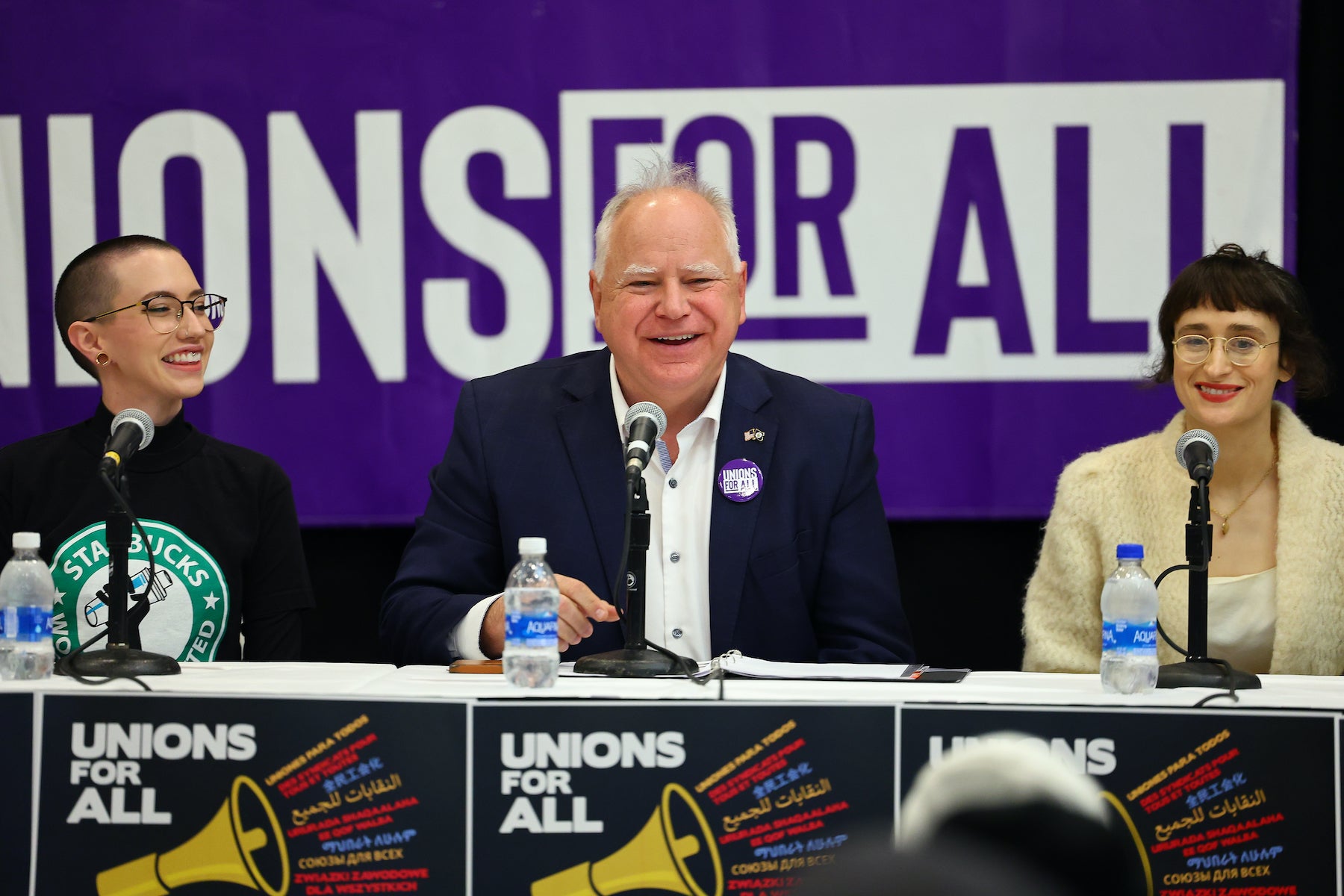
Labor advocates could not be happier about Vice President Kamala Harris’ pick of Minnesota Gov. Tim Walz as her running mate.
The cheering was instant following the official announcement Tuesday.
The International Brotherhood of Electrical Workers noted that Walz, a former teacher, understands the struggles of working people. The AFL-CIO hailed the governor as a principled fighter and labor champion.
The Service Employees International Union pointed to what it called “the Minnesota Miracle,” a sweeping package of pro-worker laws passed by the state’s Democratic legislature last year and signed into law by Walz.
There are many reasons for this warm and enthusiastic embrace, much of it tied to Walz’s background as a former union member and an unabashed supporter of worker rights. Here are a few highlights:
1. He’s a former union member who shows up at picket lines
The National Education Association, the largest labor union in the U.S. with 3 million members, wasted no time claiming Gov. Walz as one of their own.
“As a high school teacher and NEA member, Walz … has a track record of getting things done to make people’s lives better,” said Becky Pringle, the union’s president, in a statement.
The United Auto Workers praised Walz for showing up at a picket line alongside striking autoworkers last fall, while the American Federation of Teachers, who also claimed Walz as a former member, cited his work expanding collective bargaining rights for educators and others.
Minnesota is also one of eight states that has banned companies from forcing their workers to attend so-called captive audience meetings, where they try to dissuade workers from unionizing. Labor leaders noted Walz’s support last year for this new state law that protects workers who choose not to listen to their employers’ anti-union presentations.
2. Minnesota workers have paid sick days and will soon have paid family and medical leave
On January 1, 2024, Minnesota workers began earning one hour of paid sick time for every 30 hours worked, which they can use to care for themselves or a family member.
And by 2026, Minnesota workers who have a serious health condition that prevents them from working, or who need to care for a family member, will be able to avail of a paid leave program which will provide workers with partial pay along with job protections.
These new laws are especially beneficial for vulnerable low wage workers, who have very few benefits. More than 20% of private sector workers don’t have paid sick days, according to the Labor Department, partly because there’s no federal law requiring employers to provide their workers with sick leave.

Post a Comment